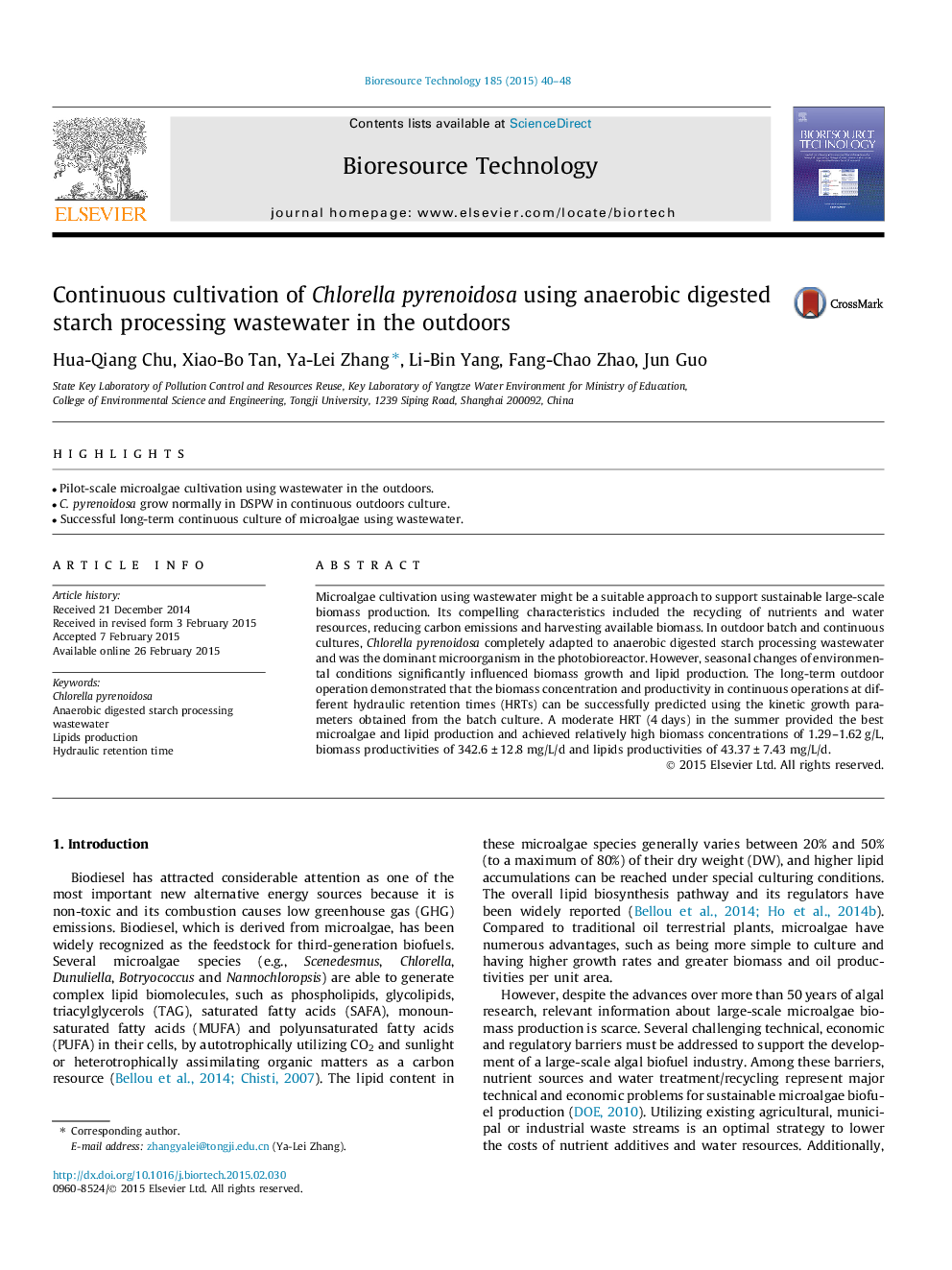| Article ID | Journal | Published Year | Pages | File Type |
|---|---|---|---|---|
| 679829 | Bioresource Technology | 2015 | 9 Pages |
Abstract
Microalgae cultivation using wastewater might be a suitable approach to support sustainable large-scale biomass production. Its compelling characteristics included the recycling of nutrients and water resources, reducing carbon emissions and harvesting available biomass. In outdoor batch and continuous cultures, Chlorella pyrenoidosa completely adapted to anaerobic digested starch processing wastewater and was the dominant microorganism in the photobioreactor. However, seasonal changes of environmental conditions significantly influenced biomass growth and lipid production. The long-term outdoor operation demonstrated that the biomass concentration and productivity in continuous operations at different hydraulic retention times (HRTs) can be successfully predicted using the kinetic growth parameters obtained from the batch culture. A moderate HRT (4 days) in the summer provided the best microalgae and lipid production and achieved relatively high biomass concentrations of 1.29-1.62 g/L, biomass productivities of 342.6 ± 12.8 mg/L/d and lipids productivities of 43.37 ± 7.43 mg/L/d.
Related Topics
Physical Sciences and Engineering
Chemical Engineering
Process Chemistry and Technology
Authors
Hua-Qiang Chu, Xiao-Bo Tan, Ya-Lei Zhang, Li-Bin Yang, Fang-Chao Zhao, Jun Guo,
